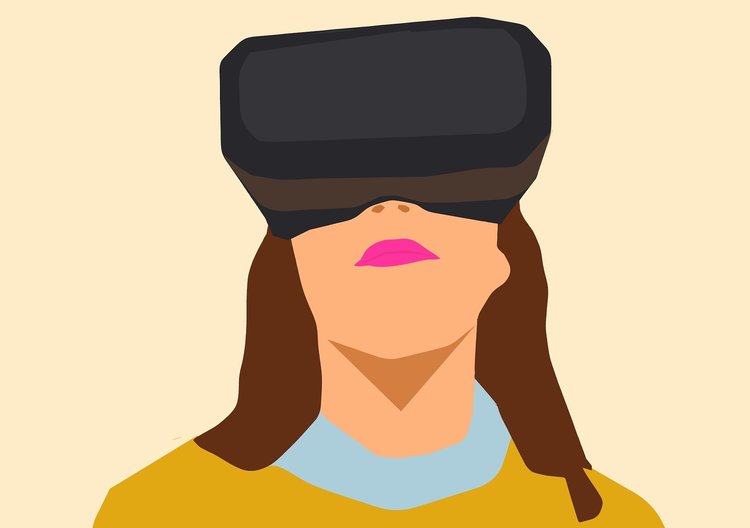VR: The Future of Experimental Social Research?
Experimental psychology, props and actors
In the second half of the 19th century, Wilhelm Wundt established the first ever experimental psychology lab. This marked a turning point in the subfields of social science related to human behavior, perception, memory, cognition, and learning. Many followed Wundt’s lead, applying statistical methods and experimental approaches to the analysis of social interactions.

In the late 1950s, Morton Heilig was developing Sensorama, the first prototype of a virtual environment that could engage, at a very basic level, various human senses. Meanwhile, social psychologists were starting to use props and actors to stage experiments for research. Bibb Lantané and Judith Rodin tested the bystander effect with 120 volunteers, and actors faking distress. Milgram demonstrated obedience to authority with participants who were made to believe they were electrocuting another human being. Zimbardo was also pushing staged experiments to their limits, getting participants to play the role of prison guards and inmates, with very clear results: Even though the volunteers were fully aware that they were neither an officer nor a prisoner, they immersed themselves totally in their assigned roles.
According to Andrea Gaggioli, these and other experiments in human perception and response have laid the groundwork for the improvement of the hardware and software of computer-generated immersive virtual realities (VR), bringing us from Sensorama to Oculus Rift. And because of its effectiveness, social psychologists are increasingly using VR to aid and enrich their experimental research. Having said that, there remains significant room for improvement in immersive technologies.
Challenges of using VR as a research method
Social scientists argue that VR is not yet good enough to run the sort of complex behavioral experiments that Milgram and Zimbardo were doing in the 70s. Inconsistent visual cues, missing parts of your immersed body or weird limb movements all contribute to lessening the experiments’ ecological validity (in psychology studies, used to denote how close the setting and tools are to the real world). Moreover, Kulik doubts the generalizability of studies that use VR as an experimental tool, as the virtual characters created will not display the subtle body language that humans do.
In a review of VR applications to social psychology, Pan and Hamilton express belief in its potential, but warn researchers of the limitations. They acknowledge the advantages of running live experiments; being able to track physiological data, record the entire experiment, and capture the participant’s motion. The technology is limited, however, in that it is not yet possible to track facial expressions or brain activity, both of which are essential for understanding implicit behaviour.
In 2006, Slater and colleagues replicated the Milgram experiment in VR proving that “in spite of the fact that all participants knew for sure that neither the stranger nor the shocks were real, the participants who saw and heard her tended to respond to the situation at the subjective, behavioural and physiological levels as if it were real.” This unleashed a number of studies looking at existing theories, including the bystander effect (video from 38’’34’) and measuring trust.

VR is most useful where there are currently no alternatives
There is no better way to reduce implicit racial bias or empathize with victims of domestic violence than by entering a virtual scenario in their shoes. These types of studies have been so successful that many organisations aiming to promote societal changes are using these technologies, in collaboration with researchers, to create content that can be used to educate. Courtney Cogburn of Columbia University and the Virtual Human Interaction Lab at Stanford developed “1000 Cut Journey”, in which the participant is placed in the body of a black man at four different stages of his life to experience the subtleties of racial bias. Entrepreneur and survivor of sexual violence Morgan Mercer created Vantage Point, a corporate VR training programme to expose people to “contextual and hard-to-detect nuances of common sexual harassment situations”.
Many human feelings and experiences are very hard to elicit in a controlled experimental way, and in a way that can be measured and analysed. VR offers a solution. Researchers that had previously been unable to induce the full range and intensity of ‘awe’ in lab settings, have now managed to use VR to stimulate different sensory elements in the participants and enable them to experience this feeling. Otherwise impossible to implement in a live setting, Barberia, Oliva, Bourdin and Slater were able to expose 15 participants to virtual mortality and near-death experiences, measuring an immediate positive impact on their lives. Van Gelder used embodiment techniques to show teenagers older versions of themselves in a virtual scenario, and measured a resulting decrease in their desire for cheating or delinquency.
Studying illegal activity in action has long been a problem in criminology. It is simply not possible in real life. Researchers normally interview offenders and analyse crime events post-mortem, but these methods are wrought with biases. The Virtual Burglary Project, a collaboration between the NSCR, the Network Institute Tech Labs (VU University), and the University of Portsmouth, got participants with and without previous offences to rob houses in a virtual neighborhood, and observed the differences in behavior and physiological responses. Van Gelder provides a more detailed overview of the application of VR in criminology.
Future or fad?
The recent improvements in VR – enhanced realism, more accurate body movements, and full-body presence – have greatly increased its validity, sometimes lending it as the best tool for social science research. I strongly believe that its essential advantages over real life scenarios and vignette-based research (reproducibility, ability to control the experiment and develop scenarios that are hard to implement in the real world) will render VR the go-to method for social scientists, especially those working on social phenomena.
What do you think? We will be further exploring whether VR is the future or just a fad in a unique event on 27th February. Taking place in a fully immersed VR room provided by Immersive VR Education, we will be joined by three experts in the field to continue the discussion. Check our events page for more information and to book your place!




















































































